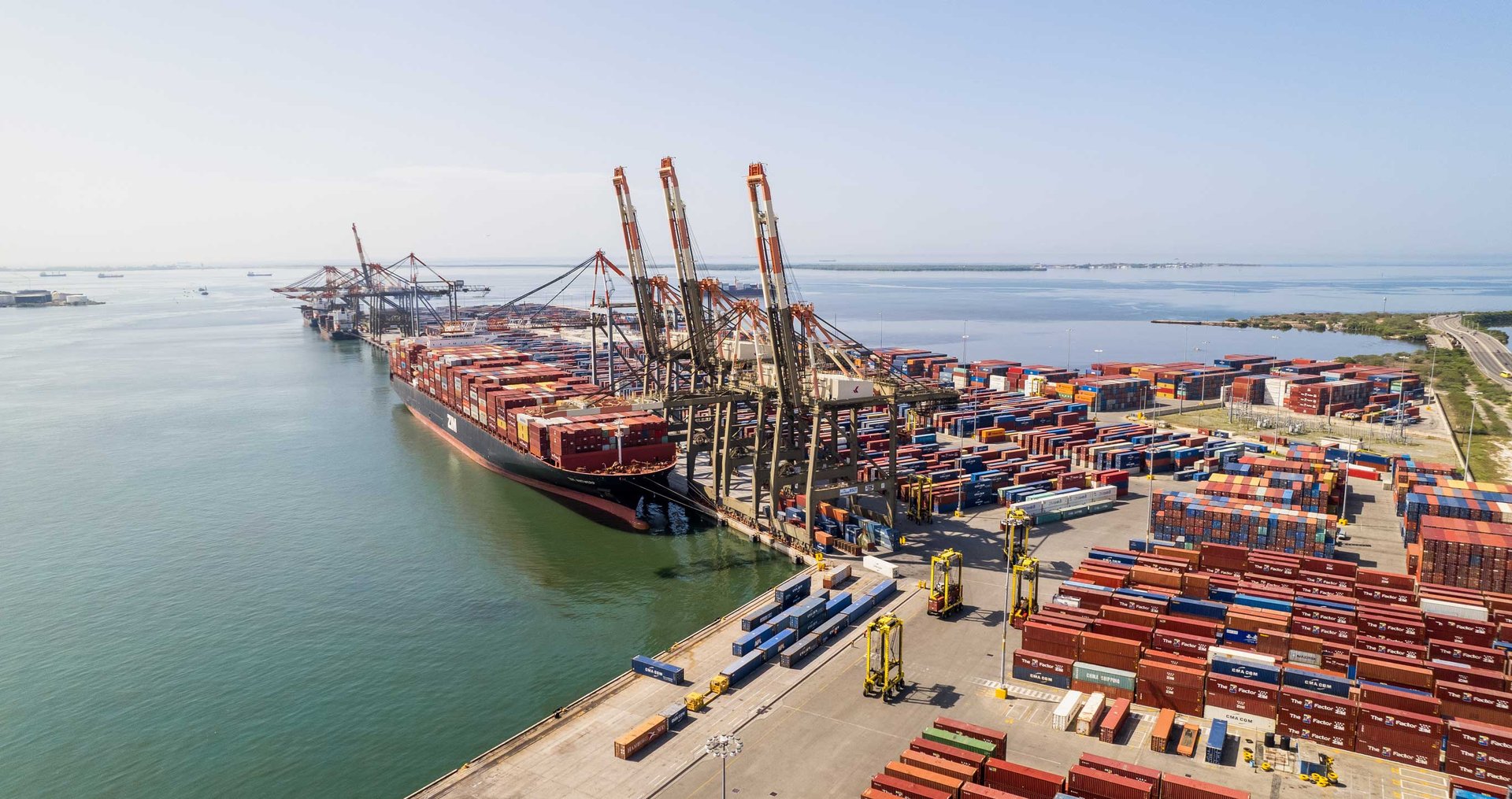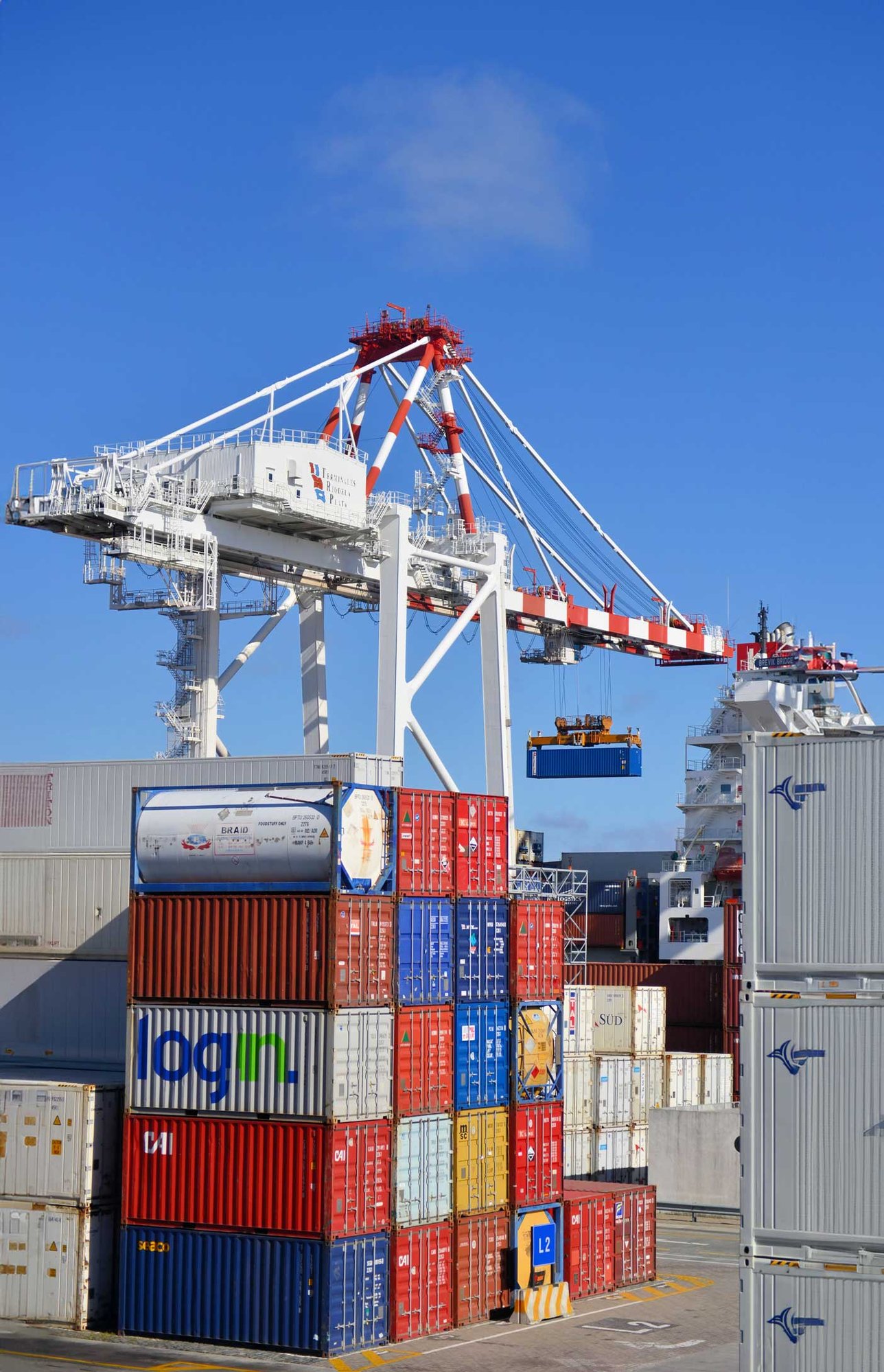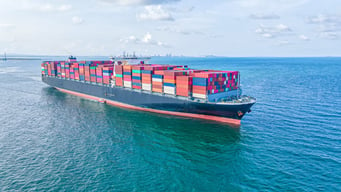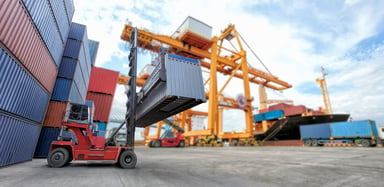
Freight Glossary

Freight Terms

Automated Manifest System (AMS)
The Automated Manifest System (AMS) is a tracking system used by U.S. Customs and Border Protection (CBP) to manage the documentation and movement of goods entering the United States.
Beneficial Cargo Owner
The actual owner of the freight being shipped, as opposed to intermediaries like freight forwarders or logistics providers. BCOs are typically companies that send or receive goods in substantial volumes, having a direct interest in the cargo.
Bill of Lading
A Bill of Lading (BOL) is a crucial document used in the logistics and shipping industry, acting as a contract between the shipper of goods and the carrier.
Billing Adjustment
A billing adjustment refers to a change or correction made to an invoice or bill after it has been issued.
Blind Shipping
Blind shipping, also known as blind dropshipping or anonymous shipping, is a logistics practice where the sender (shipper) and recipient (consignee) of goods remain undisclosed to each other. In a blind shipment, the packaging and accompanying documents conceal the identity of the original shipper, providing anonymity throughout the shipping process.
Bonded Goods
Merchandise stored or transported under customs control, either awaiting import duties and taxes or in transit to another destination. This status allows for deferred payment of duties, often in secured facilities known as bonded warehouses.
Carriers Lien
A carriers' lien is a legal right that allows a carrier to retain possession of a shipper's cargo until all transportation fees and charges owed by the shipper are paid in full. This lien provides carriers with security for the services rendered, ensuring they are compensated before the cargo is released to the recipient.
Certificate of Origin
A Certificate of Origin (also known as cert of origin or CO) is an official document that certifies the country where goods originated. It serves as proof of origin and is often required in international trade to determine eligibility for preferential tariff treatment under trade agreements or to comply with import regulations of the importing country.
Chassis Usage Fee
The chassis fee is a charge imposed by transportation providers or leasing companies for the use of a chassis. A chassis is a wheeled frame specifically designed for carrying container loads from ports to final destinations via road or rail.
Cheapest Freight
A term used to describe the most cost-effective option for transporting goods. It typically involves a balance between transit times, service levels, and price, catering to shippers with budget constraints or less time-sensitive shipments.
Commercial Invoice
A commercial invoice is a key document used in international trade that provides details about the goods being sold and shipped from one party to another.
Common Carriers
A common carrier in the realm of freight services refers to an entity that provides transportation services to the public under regulatory guidelines.
Congestion Surcharge
A congestion surcharge is an additional fee that shipping companies may impose on freight rates when there is excessive congestion at ports.
Consignee/Consignor
The individual or entity that originates a shipment of goods. In a freight transaction, the consignor is responsible for preparing and handing over the cargo to a carrier for transportation to the consignee or recipient.
Container Freight Station
A Container Freight Station (CFS) is a facility where cargo is consolidated or deconsolidated before being exported or imported.
Consolidation Fee
A consolidation fee is a charge applied by logistics providers when multiple smaller shipments are combined into one larger shipment. This process, known as consolidated shipping, is a cost-effective method used primarily in freight and cargo transportation to optimize and reduce the cost of shipping goods.
Contract Carriage
In the logistics and transportation industry, the concept of contract carriage represents a specialized service model where specific equipment and operational services are dedicated solely to a single client under a long-term agreement. This type of service is often contrasted with common carriage, where transportation providers serve multiple shippers without long-term commitments. Contract carriage offers numerous benefits, including predictable pricing, customized service, and a closer partnership between the carrier and the shipper.
CIF Cost Insurance and Freight
CIF is an Incoterm that requires the seller to cover the costs of shipping, insurance, and freight to the destination port, but the buyer assumes the risk of the goods once they are loaded onto the vessel.
CPT Carriage Paid To
CPT is an Incoterm where the seller is responsible for delivering the goods to a carrier or another party nominated by the buyer, with the seller paying the transportation costs up to a specified destination.
Crating Services
Crating services involve the design, construction, and provision of sturdy wooden or metal crates to secure and protect goods during transportation.
Customs Broker
In the realm of international trade and shipping, a customs broker plays a pivotal role. Acting as a knowledgeable intermediary, a customs broker facilitates the movement of goods across borders while ensuring adherence to various customs regulations and requirements. Whether it's import or export, businesses rely on the expertise of customs brokers to navigate the complexities of customs procedures smoothly.
Customs Entry
Customs entry is the formal process where a traveler declares goods and submits themselves for immigration and customs inspection when entering a country. This procedure is essential for ensuring that goods comply with local laws and regulations, and for the collection of appropriate duties and taxes.
Customs Clearance
Customs clearance is the process of ensuring that imported goods comply with all regulatory requirements and are granted permission to enter a country. It involves various procedures, documentation, and inspections carried out by customs authorities to assess duties, taxes, and adherence to import regulations.
Drayage
Drayage is a specialized form of logistics that involves transporting goods over short distances, typically as part of a longer journey involving multiple modes of transportation.
Dry Van
A dry van trailer is an enclosed, non-climate-controlled trailer designed for the transportation of dry goods that do not require temperature regulation.
Expedited Freight
In today's fast-paced world, the speed at which goods move across borders and continents directly impacts business efficiency and customer satisfaction. Expedited freight has become a crucial part of the logistics and transportation industry, offering solutions that prioritize time-sensitive shipments. This service ensures that goods arrive at their destinations quickly and reliably, which is vital for industries requiring rapid delivery such as healthcare, automotive, and retail.
Export Declaration
A mandatory document submitted by exporters to customs authorities, detailing the nature, quantity, and destination of goods being sent abroad. This declaration is crucial for compliance with export regulations and tracking international trade.
FCA (Free Carrier)
FCA, or Free Carrier, is one of the Incoterms used in international trade to define the responsibilities of buyers and sellers.
Flatbed shipping
Flatbed shipping refers to the transportation of goods using flatbed trucks, which are characterized by an open trailer design without sides or a roof.
FOB Destination
FOB destination, short for "Free on Board Destination," is an Incoterm where the seller bears all costs and risks until the goods are delivered to the buyer's specified location.
FOB Origin
Free on Board Origin is a shipping term used in international trade. It indicates that the buyer takes ownership and responsibility for the goods as soon as they leave the seller's shipping point.
Forty-foot Equivalent Unit (FEU)
A Forty-foot Equivalent Unit (FEU) is a standard unit of measurement used in the shipping industry to quantify the capacity of cargo containers. It represents the volume and size of a standard 40-foot shipping container. FEUs are commonly used to calculate shipping costs and to compare the capacity of different container types.
Forwarders Cargo Receipt (FCR)
A Forwarders Cargo Receipt (FCR), also known as a freight forwarder cargo receipt or simply a freight forwarder receipt, is a crucial document issued by a freight forwarder to acknowledge the receipt of goods for shipment. It serves as proof that the freight forwarder has received the goods from the shipper and assumes responsibility for their transportation to the designated destination.
Freight Broker
A freight broker, also known as a shipping broker, acts as an intermediary between shippers who need to transport goods and carriers who have the capacity to move those goods.
Freight Carriers
A freight carrier is a company or entity that specializes in transporting goods or cargo from one location to another. These carriers offer various transportation services, including trucking, rail, air freight, and maritime shipping, to meet the diverse needs of shippers and consignees
Freight Class
Freight class plays a fundamental role in the logistics and shipping industry, particularly within the less-than-truckload (LTL) shipping sector. Determining the correct freight class is essential for managing shipping costs and ensuring efficient handling and transportation of goods.
Freight Forwarder
A freight forwarder is a company or individual that arranges the transportation of goods on behalf of a shipper.
Freight Hauler
A company or individual specializing in the transportation of large quantities of goods, typically using sizeable vehicles like trucks and trailers. They play a pivotal role in supply chains, ensuring goods move from origin to destination.
Freight Shipping Quote
An estimate provided by carriers or freight forwarders detailing the cost to transport goods from one location to another. This quote typically includes fees for transportation, handling, insurance, and any additional services required.
Freight Terminal
A freight terminal is a central hub or facility where goods and cargo are transferred between different modes of transportation, such as from trucks to rail or from ships to trucks.
Fumigation Certificate
A Fumigation Certificate, also known as a Pest Control Certificate, is a document that confirms the completion of fumigation procedures on shipped goods, particularly those involving wood packaging like pallets and boxes. This certification is essential to ensure that the goods being transported are free from pests and diseases, complying with the environmental and health safety standards of the importing country. Various types of fumigation certificates exist, such as the methyl bromide fumigation certificate, container fumigation certificate, and wooden box fumigation certificate.
Handling Unit
A handling unit refers to a single, packaged entity that can be handled, moved, or stored as a single item during warehousing, shipping, and logistics operations.
Heavy Freight
Heavy freight refers to large, oversized, or extremely heavy items that require specialized handling and transport methods.
Hazmat Materials
Hazmat materials, short for hazardous materials, encompass substances that pose risks to health, safety, or property during transport.
Importer Security Filling
A requirement by customs authorities for maritime shipments entering certain countries, where importers must electronically submit detailed information about the contents of their shipments before they are loaded onto vessels. This measure is designed to enhance security and facilitate risk assessment of incoming cargo.
Inland Haulage Charges (IHC)
Is the cost associated with transporting goods overland from one location to another.
Inspection Certificate
A document issued by a qualified inspector or agency verifying that goods have been inspected and meet the specified requirements or standards. This certificate is often required for customs clearance and to ensure compliance with the importing country's regulations.
Intermodal Shipping
Intermodal transportation refers to the movement of goods using multiple modes of transport—such as rail, road, and sea—without handling the freight itself when changing transportation modes.
International Courier
A service specializing in the fast delivery of documents and parcels across national borders. International couriers offer expedited shipping, tracking, and custom clearance services, catering to time-sensitive and valuable shipments.
Lift Gate
A mechanical device fitted to the back of a truck or trailer, used to facilitate the loading and unloading of goods. It operates by raising or lowering cargo from the ground to the vehicle's level, aiding in the handling of heavy items.
Material Safety Data Sheet (MSDS)
A Material Safety Data Sheet (MSDS), also known as a Safety Data Sheet (SDS) in some regions, is a comprehensive document that provides detailed information about potentially hazardous chemicals or products. Its primary purpose is to ensure the safe handling, storage, and use of these substances by providing information on their properties, hazards, precautions, and emergency response procedures.
Multimodal Shipping
Multimodal shipping stands out as a versatile and effective method for moving cargo using multiple forms of transportation, from sea freight to air and land transport. This method leverages the strengths of different transportation modalities to achieve faster delivery times, cost efficiency, and improved service quality.
NMFC codes
Understanding and utilizing NMFC codes is essential for shippers, brokers, and carriers as they prepare to ship freight. This process starts with a lookup of the NMFC number, which identifies the class of the freight based on criteria such as density, stowability, handling, and liability.
Parcel Shipping
The process of dispatching smaller, individually packaged items, often via courier or postal services. This method is distinguished by handling units that are lighter and smaller compared to bulk freight, making it ideal for e-commerce and retail deliveries.
Power Of Attorney (POA)
A Power of Attorney (POA) in shipping is a legal instrument that grants authority to an individual or entity to act on behalf of another party in shipping-related matters. It allows the appointed representative to perform tasks such as signing documents, making decisions, and conducting transactions related to export shipments, international shipping, or shipping vehicles.
Scac codes
A Standard Carrier Alpha Code (SCAC) is a unique two-to-four-letter code assigned by the National Motor Freight Traffic Association (NMFTA) to identify carriers operating in the United States.
Shipping Auto Parts
Shipping auto parts, whether domestically or internationally, requires careful packaging, compliance with safety standards, and attention to regulatory requirements.
Shipping equipment
Shipping heavy equipment requires specialized services and careful planning to ensure safe transport. Heavy equipment transport typically involves the use of flatbed trailers, freight trailers, and shipping containers designed to handle oversized or bulky machinery.
Shipping Labels
A shipping label is a crucial part of the shipping process, as it contains all the essential information about a package’s journey, from the origin address to the final destination.
Shippers Letter Of Instruction (SLI)
The Shipper's Letter of Instruction (SLI) is a vital document in shipping transactions as it provides detailed instructions from the shipper to various parties involved in the shipping process. It ensures clear communication and helps streamline operations, reducing the risk of errors or misunderstandings.
Standard pallet sizes
Standard pallet shipping sizes play a critical role in ensuring that goods are securely and efficiently transported.
Third Party Logistics
3PL refers to outsourcing logistics and supply chain management activities to specialized service providers.
TL of FTL - Truckload or Full Truckload
A freight mode where a large quantity of goods, usually enough to fill an entire semi-trailer, is transported by road. This term is often used to differentiate from less-than-truckload (LTL) shipping, where cargo space is shared among multiple shippers.
Trucking
The act of transporting goods by road using trucks. A vital component of the logistics and distribution network, providing flexibility and connectivity between other modes of transportation.
Trucking Broker
An intermediary between shippers and trucking companies, responsible for arranging the transportation of goods. Brokers do not own trucks but play a key role in the logistics chain by matching available shipments with carriers.
Trucking Business
An enterprise that involves the operation of trucks for the purpose of transporting goods across distances. It encompasses logistics, fleet management, and regulatory compliance.
Trucking Companies
Businesses that offer transportation services for goods using trucks. These companies can range from small operations to large fleets offering nationwide or international shipping.
Traffic Mitigation Fee
A charge imposed on shipping companies or cargo owners by ports or regulatory authorities, intended to offset the costs associated with managing traffic congestion and improving infrastructure within port areas or transport corridors.
Trucking Cost per Mile
A calculation used in the trucking industry to determine the expense of transporting goods over one mile. It factors in fuel, maintenance, driver wages, and other operational costs.
Trucking Rates
The pricing structure determined by trucking companies for the transportation of goods. Rates may vary based on distance, cargo weight, type, and additional services.
Trucking Service
A transportation service provided by companies that specialize in the conveyance of goods by road, using various types of trucks suited to different cargo sizes and types.
Twenty-foot Equivalent Unit (TEU)
A measurement standard representing a container's dimensions, typically 20 feet in length, used in quantifying cargo capacity or shipping container volumes. It serves as a universal scale for classifying container sizes in the global shipping industry.
UN Number
A UN number, or United Nations number, is a four-digit code used to identify hazardous materials and articles in international transport. Administered by the United Nations Committee of Experts on the Transport of Dangerous Goods, these numbers are universally recognized and provide a shorthand way to understand the risks associated with specific substances.
Unit Load Device
Equipment used in aviation to consolidate cargo into single units, facilitating quick loading onto aircraft and optimizing space. ULDs include containers and pallets specifically designed for air transport.
Valuable Cargo
Goods considered to have a high monetary value or significance, requiring specialized handling, security, and insurance during transportation.
Air Freight Terminology

AWB Air Waybill
An air waybill (AWB) is a legal document issued by a carrier that provides detailed information about a shipment.
Allotment
A term used in air freight to describe a pre-agreed space or weight capacity reserved by an airline for a freight forwarder or shipper over a specified period.
ATA
ATA signifies the precise time an aircraft arrives at its destination. This timestamp is vital for logistics planning, enabling accurate updates on cargo delivery schedules.
ATD
ATD marks the confirmed time an aircraft departs from the airport. It is crucial for tracking shipments and estimating arrival times in air freight operations.
CFR
CFR, which stands for Cost and Freight, is an Incoterm used in international trade to define the responsibilities of both the buyer and the seller.
Charter
Chartering in air freight involves hiring an entire aircraft for a specific shipment, allowing for a customized schedule and route. This option is preferred for urgent, high-value, or outsize cargo needing dedicated transport.
Consignment
A consignment refers to goods entrusted to an airline or freight forwarder for transportation to a designated recipient. The consignor (shipper) retains ownership until the consignee (receiver) accepts the delivery.
Consolidation
Consolidation in air freight is the process of combining multiple smaller shipments into one lot to optimize cargo space and reduce shipping costs. It allows for economical transport by sharing the total charge among various shippers.
Container
In air freight, a container is a standardized unit used to transport cargo securely and efficiently. These containers are designed to fit into aircraft holds, maximizing space utilization and protecting goods during transit.
Curbside Pickup
Curbside freight pickup is a shipping service where the carrier collects freight from a designated curbside location, typically at the shipper's business or residence.
Customs
Customs is a government agency responsible for regulating the import and export of goods in and out of a country. They enforce trade laws, collect duties and taxes, and ensure compliance with international shipping regulations.
DDU
DDU is an international trade term indicating that the seller is responsible for delivering goods to a specified location, with the buyer covering import duties, taxes, and customs clearance costs.
Duty
A tax imposed by customs on imported and, sometimes, exported goods. Duties are typically based on the value of the goods, their type, and their origin.
EDI
EDI is a system that allows trading partners to exchange documents and information electronically, such as invoices and bills of lading, enhancing efficiency and accuracy in air freight logistics.
EXW
Ex Works is one of the most commonly used Incoterms in international trade. It signifies that the seller makes the goods available at their premises or another named place (factory, warehouse, etc.), and the buyer is responsible for all costs and risks associated with transporting the goods to their final destination.
Gateway
In air freight transportation, a gateway refers to a major airport through which cargo is processed for international import and export. It acts as a pivotal point for consolidating and redistributing shipments to their final destinations.
IATA
A global trade organization representing and serving the airline industry, responsible for regulation, facilitation, and standardization in air transport.
Incoterms
International commercial terms published by the International Chamber of Commerce, defining the responsibilities of buyers and sellers in international transactions, including transport, insurance, and tariffs.
Insurance Certificate
A document issued by an insurance company or broker that serves as proof of insurance coverage for goods during transportation.
Intermodal
A type of transport that involves the movement of goods in one and the same loading unit or vehicle, using multiple modes of transportation (e.g., rail, ship, and truck) without handling the freight itself when changing modes.
Lower Deck
The cargo area below the main deck in an aircraft, used for transporting freight, luggage, and mail. It maximizes the aircraft's capacity for carrying goods alongside passenger luggage.
Packing List
A packing list is a detailed document accompanying a shipment that lists all included items, their quantities, and descriptions. It is essential for customs clearance, verifying cargo, and handling instructions.
Pro Forma Invoice
A preliminary bill of sale sent to buyers in advance of a shipment or delivery of goods, detailing the types and quantities of goods, their value, and other important information.
Shortage
A shortage occurs when the received quantity of goods is less than the quantity stated on the shipping documents. This discrepancy can result from errors in loading, theft, or damage during transportation.
Incoterms

CFR (Cost and Freight)
This term means the seller must pay the costs and freight necessary to bring the goods to the named port of destination, but the risk is transferred to the buyer once the goods are loaded on the vessel.
CIF (Cost, Insurance and Freight)
A term where the seller covers the costs, insurance, and freight to bring the goods to the port of destination. However, risk is transferred to the buyer once the goods are loaded on the vessel.
CIP (Carriage and Insurance Paid To)
A term where the seller pays for the carriage and insurance to the named destination, but the risk transfers to the buyer upon handing the goods over to the first carrier.
CPT (Carriage Paid To)
Indicates the seller pays for the carriage of goods to the named destination, but risk transfers to the buyer when the goods are handed over to the first carrier.
DAP (Delivered At
Place
Indicates the seller delivers the goods to a named place of destination, ready for unloading at the buyer's disposal, not cleared for import or unloaded.
DAT (Delivered At
Terminal)
A term where the seller delivers and unloads the goods at a terminal (quay, warehouse, container yard, or road, rail or air cargo terminal) at the destination agreed, assuming all risks and costs to that point.
DDP (Delivered Duty
Paid)
Indicates that the seller delivers the goods to the buyer, cleared for import, and bears all costs and risks, including duty payments and customs clearance.
EXW (EX-Works)
A term where the seller makes goods available at their premises, or another named place, with the buyer being responsible for all subsequent costs and risks involved in moving the goods to the final destination.
FAS (Free Alongside
Ship)
This term means the seller places the goods alongside the vessel on which they are to be shipped. The seller is responsible for the cost and risk until the goods are alongside the ship.
FCA (Free Carrier)
A term indicating the seller delivers the goods, cleared for export, to the carrier selected by the buyer at a specified location. The risk passes to the buyer when the goods are handed over to the carrier.
FOB (Free On Board)
A shipping term where the seller is responsible for delivering goods on board a ship chosen by the buyer. Liability and costs transfer to the buyer once the goods cross the ship's rail at the departure port.
Freight Terms

The actual owner of the freight being shipped, as opposed to intermediaries like freight forwarders or logistics providers. BCOs are typically companies that send or receive goods in substantial volumes, having a direct interest in the cargo.
Learn More
Merchandise stored or transported under customs control, either awaiting import duties and taxes or in transit to another destination. This status allows for deferred payment of duties, often in secured facilities known as bonded warehouses.
Learn More
A term used to describe the most cost-effective option for transporting goods. It typically involves a balance between transit times, service levels, and price, catering to shippers with budget constraints or less time-sensitive shipments.
Learn More
The individual or entity that originates a shipment of goods. In a freight transaction, the consignor is responsible for preparing and handing over the cargo to a carrier for transportation to the consignee or recipient.
Learn More
A mandatory document submitted by exporters to customs authorities, detailing the nature, quantity, and destination of goods being sent abroad. This declaration is crucial for compliance with export regulations and tracking international trade.
Learn More
A company or individual specializing in the transportation of large quantities of goods, typically using sizeable vehicles like trucks and trailers. They play a pivotal role in supply chains, ensuring goods move from origin to destination.
Learn More
An estimate provided by carriers or freight forwarders detailing the cost to transport goods from one location to another. This quote typically includes fees for transportation, handling, insurance, and any additional services required.
Learn More
A requirement by customs authorities for maritime shipments entering certain countries, where importers must electronically submit detailed information about the contents of their shipments before they are loaded onto vessels. This measure is designed to enhance security and facilitate risk assessment of incoming cargo.
Learn More
A document issued by a qualified inspector or agency verifying that goods have been inspected and meet the specified requirements or standards. This certificate is often required for customs clearance and to ensure compliance with the importing country's regulations.
Learn More
A service specializing in the fast delivery of documents and parcels across national borders. International couriers offer expedited shipping, tracking, and custom clearance services, catering to time-sensitive and valuable shipments.
Learn More
A mechanical device fitted to the back of a truck or trailer, used to facilitate the loading and unloading of goods. It operates by raising or lowering cargo from the ground to the vehicle's level, aiding in the handling of heavy items.
Learn More
The process of dispatching smaller, individually packaged items, often via courier or postal services. This method is distinguished by handling units that are lighter and smaller compared to bulk freight, making it ideal for e-commerce and retail deliveries.
Learn More
A freight mode where a large quantity of goods, usually enough to fill an entire semi-trailer, is transported by road. This term is often used to differentiate from less-than-truckload (LTL) shipping, where cargo space is shared among multiple shippers.
Learn More
The act of transporting goods by road using trucks. A vital component of the logistics and distribution network, providing flexibility and connectivity between other modes of transportation.
An intermediary between shippers and trucking companies, responsible for arranging the transportation of goods. Brokers do not own trucks but play a key role in the logistics chain by matching available shipments with carriers.
An enterprise that involves the operation of trucks for the purpose of transporting goods across distances. It encompasses logistics, fleet management, and regulatory compliance.
Businesses that offer transportation services for goods using trucks. These companies can range from small operations to large fleets offering nationwide or international shipping.
A charge imposed on shipping companies or cargo owners by ports or regulatory authorities, intended to offset the costs associated with managing traffic congestion and improving infrastructure within port areas or transport corridors.
Learn More
A calculation used in the trucking industry to determine the expense of transporting goods over one mile. It factors in fuel, maintenance, driver wages, and other operational costs.
The pricing structure determined by trucking companies for the transportation of goods. Rates may vary based on distance, cargo weight, type, and additional services.
A transportation service provided by companies that specialize in the conveyance of goods by road, using various types of trucks suited to different cargo sizes and types.
A measurement standard representing a container's dimensions, typically 20 feet in length, used in quantifying cargo capacity or shipping container volumes. It serves as a universal scale for classifying container sizes in the global shipping industry.
Learn More
Equipment used in aviation to consolidate cargo into single units, facilitating quick loading onto aircraft and optimizing space. ULDs include containers and pallets specifically designed for air transport.
Goods considered to have a high monetary value or significance, requiring specialized handling, security, and insurance during transportation.
Air Freight Terminology

A term used in air freight to describe a pre-agreed space or weight capacity reserved by an airline for a freight forwarder or shipper over a specified period.
ATA signifies the precise time an aircraft arrives at its destination. This timestamp is vital for logistics planning, enabling accurate updates on cargo delivery schedules.
ATD marks the confirmed time an aircraft departs from the airport. It is crucial for tracking shipments and estimating arrival times in air freight operations.
Chartering in air freight involves hiring an entire aircraft for a specific shipment, allowing for a customized schedule and route. This option is preferred for urgent, high-value, or outsize cargo needing dedicated transport.
A consignment refers to goods entrusted to an airline or freight forwarder for transportation to a designated recipient. The consignor (shipper) retains ownership until the consignee (receiver) accepts the delivery.
Consolidation in air freight is the process of combining multiple smaller shipments into one lot to optimize cargo space and reduce shipping costs. It allows for economical transport by sharing the total charge among various shippers.
In air freight, a container is a standardized unit used to transport cargo securely and efficiently. These containers are designed to fit into aircraft holds, maximizing space utilization and protecting goods during transit.
Customs is a government agency responsible for regulating the import and export of goods in and out of a country. They enforce trade laws, collect duties and taxes, and ensure compliance with international shipping regulations.
DDU is an international trade term indicating that the seller is responsible for delivering goods to a specified location, with the buyer covering import duties, taxes, and customs clearance costs.
A tax imposed by customs on imported and, sometimes, exported goods. Duties are typically based on the value of the goods, their type, and their origin.
EDI is a system that allows trading partners to exchange documents and information electronically, such as invoices and bills of lading, enhancing efficiency and accuracy in air freight logistics.
The projected time at which a vehicle, aircraft, or vessel is expected to depart from a specified location.
In air freight transportation, a gateway refers to a major airport through which cargo is processed for international import and export. It acts as a pivotal point for consolidating and redistributing shipments to their final destinations.
A global trade organization representing and serving the airline industry, responsible for regulation, facilitation, and standardization in air transport.
International commercial terms published by the International Chamber of Commerce, defining the responsibilities of buyers and sellers in international transactions, including transport, insurance, and tariffs.
A document issued by an insurance company or broker that serves as proof of insurance coverage for goods during transportation.
A type of transport that involves the movement of goods in one and the same loading unit or vehicle, using multiple modes of transportation (e.g., rail, ship, and truck) without handling the freight itself when changing modes.
The cargo area below the main deck in an aircraft, used for transporting freight, luggage, and mail. It maximizes the aircraft's capacity for carrying goods alongside passenger luggage.
A packing list is a detailed document accompanying a shipment that lists all included items, their quantities, and descriptions. It is essential for customs clearance, verifying cargo, and handling instructions.
A preliminary bill of sale sent to buyers in advance of a shipment or delivery of goods, detailing the types and quantities of goods, their value, and other important information.
A shortage occurs when the received quantity of goods is less than the quantity stated on the shipping documents. This discrepancy can result from errors in loading, theft, or damage during transportation.
Incoterms

This term means the seller must pay the costs and freight necessary to bring the goods to the named port of destination, but the risk is transferred to the buyer once the goods are loaded on the vessel.
A term where the seller covers the costs, insurance, and freight to bring the goods to the port of destination. However, risk is transferred to the buyer once the goods are loaded on the vessel.
A term where the seller pays for the carriage and insurance to the named destination, but the risk transfers to the buyer upon handing the goods over to the first carrier.
Indicates the seller pays for the carriage of goods to the named destination, but risk transfers to the buyer when the goods are handed over to the first carrier.
Indicates the seller delivers the goods to a named place of destination, ready for unloading at the buyer's disposal, not cleared for import or unloaded.
A term where the seller delivers and unloads the goods at a terminal (quay, warehouse, container yard, or road, rail or air cargo terminal) at the destination agreed, assuming all risks and costs to that point.
Indicates that the seller delivers the goods to the buyer, cleared for import, and bears all costs and risks, including duty payments and customs clearance.
A term where the seller makes goods available at their premises, or another named place, with the buyer being responsible for all subsequent costs and risks involved in moving the goods to the final destination.
This term means the seller places the goods alongside the vessel on which they are to be shipped. The seller is responsible for the cost and risk until the goods are alongside the ship.
A term indicating the seller delivers the goods, cleared for export, to the carrier selected by the buyer at a specified location. The risk passes to the buyer when the goods are handed over to the carrier.
A shipping term where the seller is responsible for delivering goods on board a ship chosen by the buyer. Liability and costs transfer to the buyer once the goods cross the ship's rail at the departure port.
Contact

Ocean Freight

Road Freight


Warehousing







